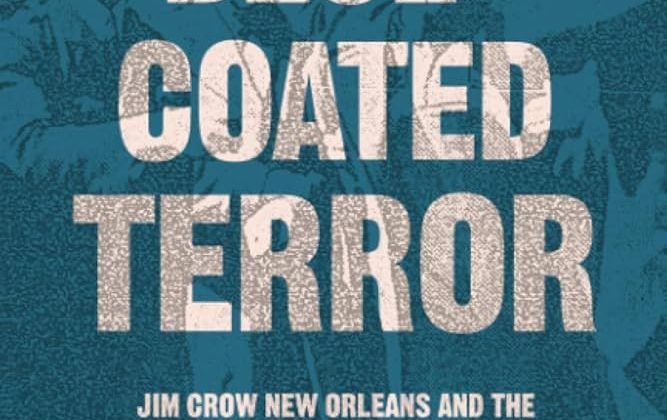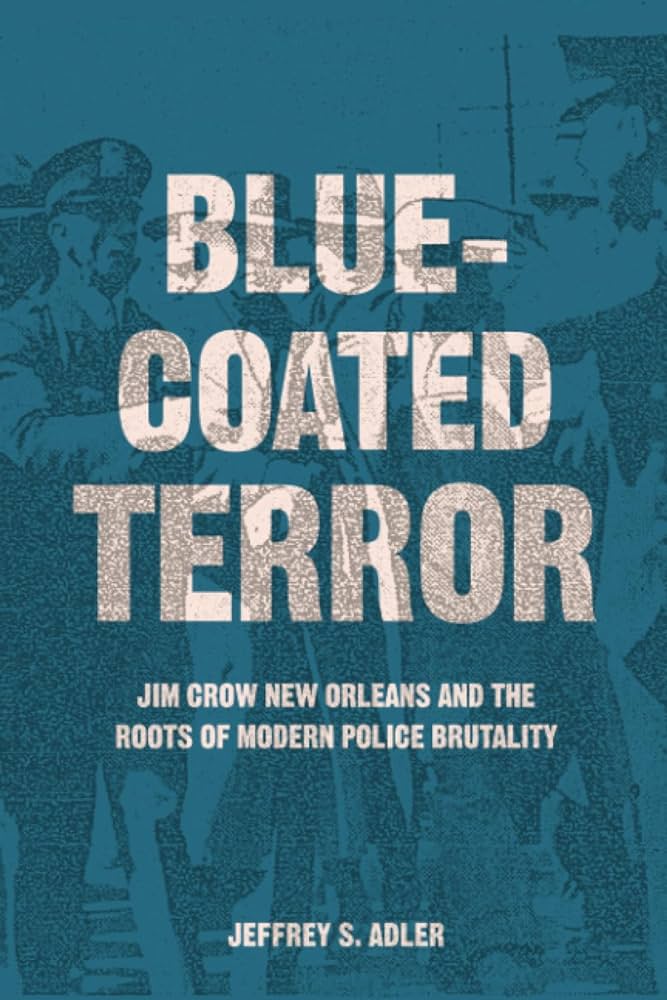

Jeffrey S. Adler is Professor of History and Criminology and Distinguished Teaching Scholar at the University of Florida. This interview is based on his new book, Bluecoated Terror: Jim Crow New Orleans and the Roots of Modern Police Brutality (University of California Press, 2024).
JF: What led you to write Bluecoated Terror?
JA: Derek Chauvin’s 2020 murder of George Floyd shocked the nation and focused intense popular attention on American police violence. Much of the public discussion insisted that such brutality was either a new or a sharply increasing phenomenon. In the eyes of many commentators, this deadly conduct had no history and was largely a product of recent social polarization and political instability. But for decades American cops have killed suspects, especially African American city dwellers, at roughly 100 times the rate of English law enforcers. I wrote Bluecoated Terror to place such violence in a historical context and explain how the murders of Floyd, Breonna Taylor, Eric Garner, and Michael Brown reflect policing practices and deeply rooted in our nation’s history. The project explores how the police use of pre-emptive deadly force became folded into “rule of law.” Explaining this process led me to focus on the Jim Crow urban South, when the pattern emerged and became institutionalized.
JF: In 2 sentences, what is the argument of Bluecoated Terror?
JA: Bluecoated Terror explores the historical development of modern police violence. A century ago, American policy makers and political officials feared racial instability and empowered legal institutions, especially the municipal police, to employ greater latitude in the use of force to pre-emptively safeguard “law and order,” thus racializing criminal justice in the United States.
JF: Why do we need to read Bluecoated Terror?
JA: Few public policy debates are more contentious and divisive than discussions of police violence. But racial disparities in American criminal justice, and particularly the disproportionate use of police violence against African American suspects, are not new but instead reflect a profound transformation in American criminal justice and law that unfolded roughly a century ago. Bluecoated Terror explains how the expansive, capacious use of deadly force became a legally accepted and often politically popular law-enforcement practice in the United States. In short, to understand modern racial turmoil and the role of policing in this issue, it is crucial to recognize how we reached this point.
JF: Why and when did you become an American historian?
JA: When I began college, a group of gifted teachers and scholars introduced me to an exciting, intriguing, and (for me) entirely new way to make sense of the world around me. They challenged me and my classmates to ask why our modern society operates as it does. Every policy, every law, every custom, and every aspect of daily life, they explained, was the product of a rich, complicated, and dynamic past. Imagining that I could examine the past to understand the present changed my life and has become a magical, engaging, unimaginably fulfilling journey for me.
JF: What is your next project?
JA: My new research explores the history of organized crime. It focuses particularly on early twentieth-century sex trafficking and how the development of this illicit enterprise became the model for modern transnational crime.
JF: Thanks, Jeffrey!

